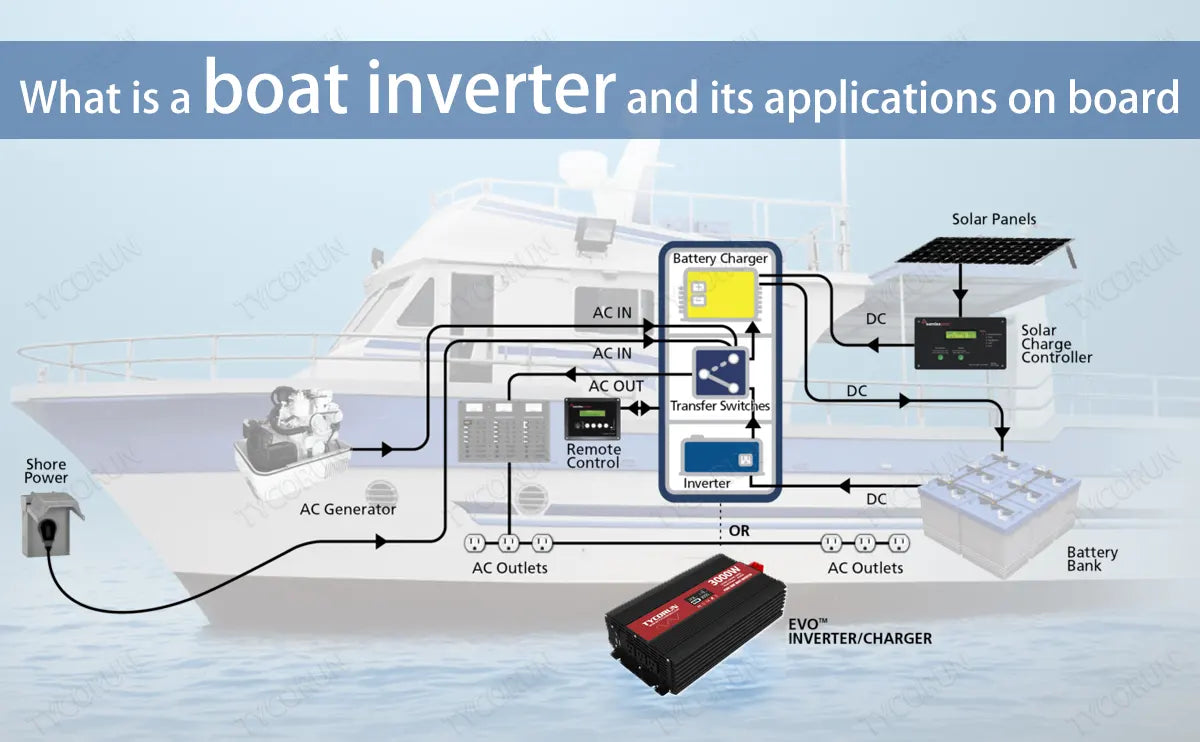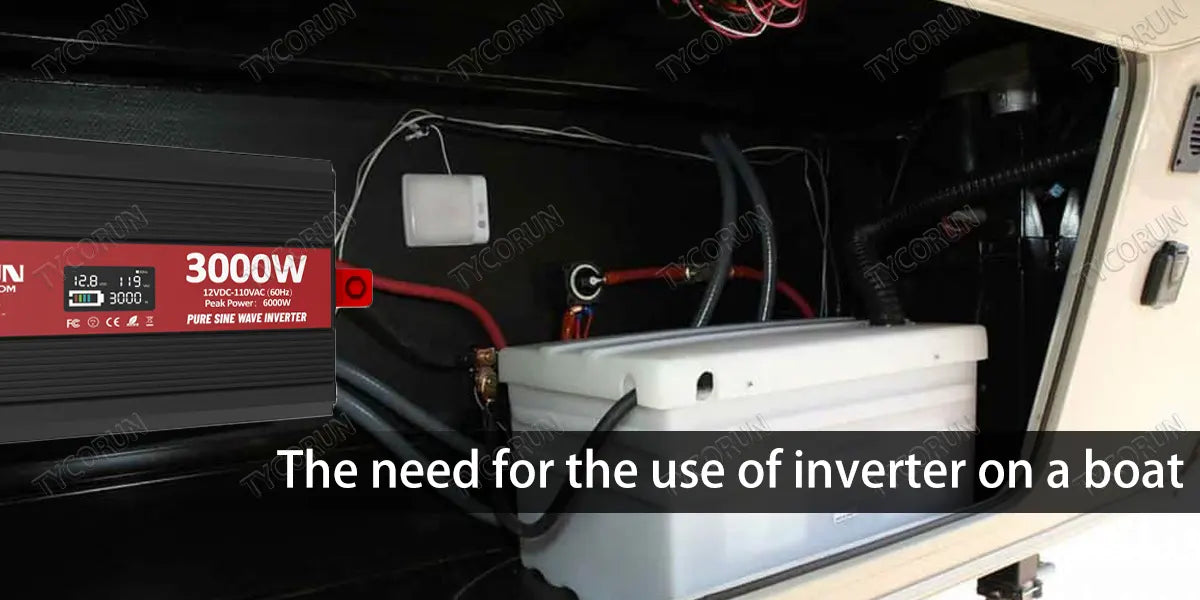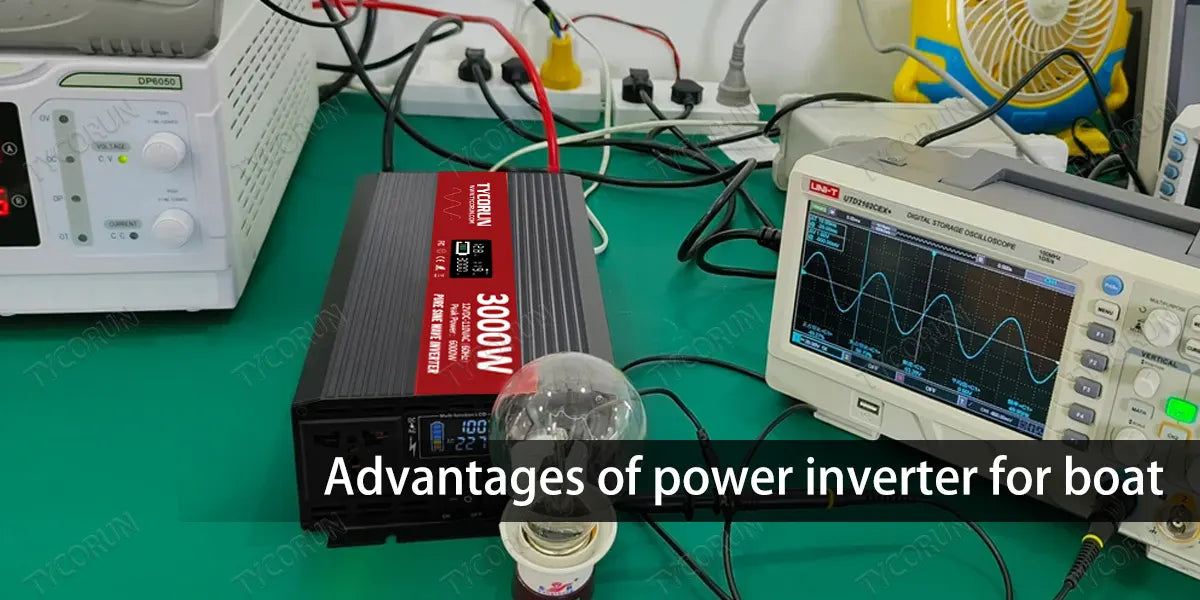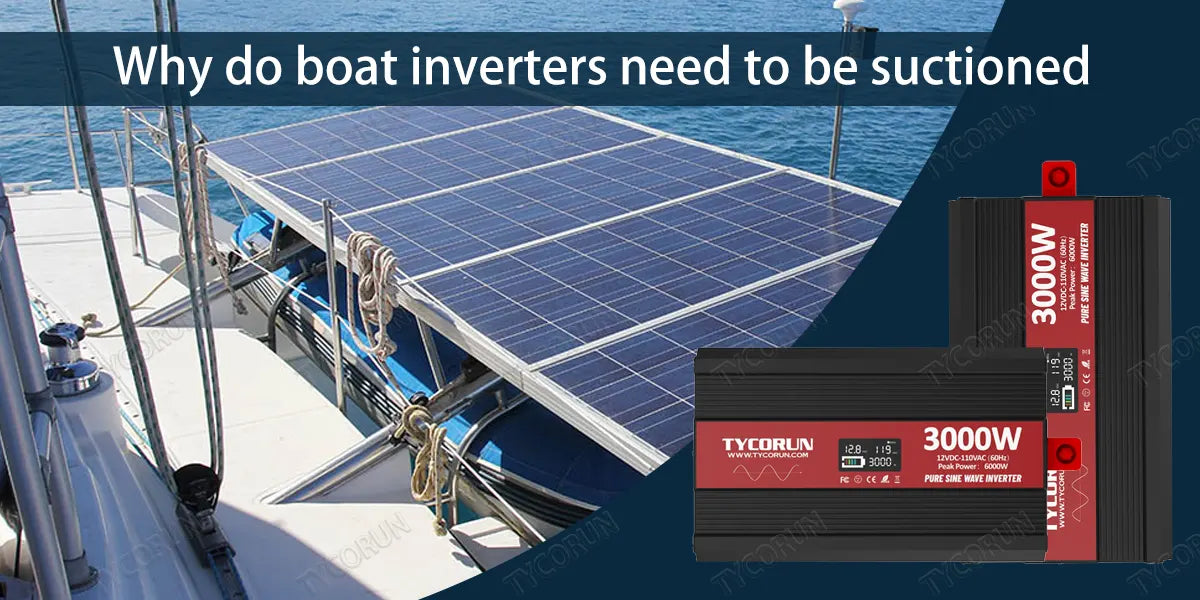
Main content:
- What is a boat inverter
- Classification of inverter on a boat
- How does a boat inverter work
- The need for the use of inverter on a boat
- Advantages of power inverter for boat
- The analysis of boat inverter technology
- Application range of inverter on a boat
- Why do boat inverters need to be suctioned
- Conclusion
As one of the important means of transportation for human beings, the reliability and stability of the power system are crucial to the safety and comfort of ships.
As a key equipment for power conversion, boat inverter provides stable and efficient power conversion solutions for ships. So what is a boat inverter, what are the requirements for use on board, and the following article will give you a detailed introduction.
1. What is a boat inverter
A boat inverter is a device that converts direct current into alternating current. It can convert the DC power supply on the ship, such as the direct current of the battery, into the alternating current required by the ship to meet the power supply needs of various electrical equipment on board.
Generally speaking, most of the power supply on ships is direct current provided by diesel generators or solar panels on board. However, electrical equipment in most countries and regions is operated on standard alternating current mains.
The output voltage and frequency of the inverter on boat can be adjusted as needed to suit different electrical equipment and marine systems.
2. Classification of inverter on a boat
According to the different output waveforms, boat inverter is generally divided into three types:
- Sine wave inverter
The output waveform of this type of inverter is a sine wave, which is characterized by a stable voltage, small ripple, and only a fundamental wave, so it has a wide range of applicability and is often used in equipment or systems that require high accuracy. The classic product is power inverter 3000w.

- Square wave inverter
The output waveform of this type of inverter defines it as a modified sine wave inverter, which has the advantages of high switching speed, fast response speed, digital logic drive, etc., but has the disadvantages of large ripples, high noise, and unstable voltage. It is often used to control simple control tasks such as speed and direction.
- Sawtooth wave inverter
The output waveform of this type of inverter is a sawtooth wave, which is characterized by a large ripple, which is not suitable for equipment that requires high accuracy. However, the inverter can realize continuous frequency adjustment and PWM (pulse width modulation technology) control, and is widely used.
3. How does a boat inverter work
The boat inverter converts the direct current on the ship into alternating current through high-frequency oscillation and control circuits. In principle, the inverter uses semiconductor devices to convert the DC power supply into a formed AC power supply to achieve the effective transmission of electric energy.
It can convert 12V or 24V low-voltage DC power on board to 120V or 220V high-voltage AC power to meet the needs of various electrical equipment.
4. The need for the use of inverter on a boat
- Electricity supply
Ships need to supply electricity to various equipment and systems, such as lighting, communication equipment, navigation equipment, refrigeration equipment, etc. Inverters can convert direct current to alternating current to meet the power needs of these devices.
- Charging equipment
Equipment such as power tools can be charged on board. The inverter can convert the power supply on board to the appropriate voltage and current for efficient charging.
- Emergency backup power
On board, the inverter can be used as a backup power source to provide emergency power if the main power supply fails or is interrupted. This is essential for the operation of critical equipment such as communication equipment and navigation equipment.

- Solar power generation
The inverter on a boat can be connected to high efficiency solar panels to realize solar power generation to charge batteries, improve the utilization rate and efficiency of electric energy, and reduce energy waste and heat loss. This is very important for energy management on board ships and on long voyages.
- Energy-efficient
Inverters can improve the utilization and efficiency of electrical energy, reduce energy waste and heat loss. This is very important for energy management on board ships and on long voyages.
- Electronic device compatibility
The inverter can provide stable AC power to ensure the proper functioning of the electronic equipment on board. This is essential for the use of equipment such as computers, televisions, stereos, etc., as well as to protect equipment from power fluctuations and disturbances.
The use of inverters on ships is to provide a stable, efficient and reliable power supply, meet the needs of various equipment and systems, and improve the energy utilization and compatibility of electronic equipment.
5. Advantages of power inverter for boat
- It enables a wide range of electrical equipment to achieve standard power output on board.
- It can save electricity, improve energy efficiency, and prolong battery life.
- The conversion efficiency is high, the use is convenient, and the operation is simple.
- It has high safety and can effectively avoid ship accidents caused by electrical problems.

Improve energy utilization: Boat inverter can convert electrical energy into the electrical energy required by the ship, improve the efficiency of electrical energy utilization, and reduce energy waste.
Stable and reliable: The boat inverter can provide stable power output to ensure the normal operation of various electrical equipment and systems of the ship.
Versatility: Boat inverter are able to adapt to the power supply needs of different electrical equipment and systems, and have a wide range of applications.
Environmental protection and energy saving: Boat inverter can convert direct current on ships and solar energy into high-efficiency alternating current, reducing energy waste and environmental impact.
6. The analysis of boat inverter technology
- Stability technology
Boat inverter usually need to be very stable to ensure that there will be no frequent jitter or failure during normal use. Therefore, in the design and manufacturing process of inverters, it is necessary to use high-quality raw materials, strict production processes, scientific quality assurance systems and other means to ensure the stability of products.
- Temperature control technology
Due to the use of the ship inverter, there will be high temperatures and other conditions. Therefore, some effective heat dissipation and cooling control technologies need to be adopted to ensure that the inverter works properly.
For example, high-efficiency radiators, fans, and other equipment can be installed on the cooling equipment of the inverter to speed up heat dissipation and ensure the accuracy of temperature control.

- Circuit protection technology
Since the boat inverter is usually affected by some external interferences, such as too high or too low voltage, excessive current, overload and other factors, and cause some faults, it is necessary to adopt some effective circuit protection technologies to prevent inverter failure.
For example, protection devices such as fuses, fuses, overvoltage, and overcurrent are applied in the circuit of the inverter to ensure the normal operation and stability of the inverter.
7. Application range of inverter on a boat
Boat inverter is widely used in various electrical equipment, such as shipboard electrical equipment, communication equipment, and navigation equipment. Such as marine lamps, electric kettles, air conditioners, washing machines and other equipment, as well as hair dryers, vacuum cleaners, refrigerators and other small household appliances.
The function of the boat inverter is to convert the direct current on the ship into alternating current to supply various electrical equipment on the ship. It is one of the essential pieces of equipment for the operation and life of modern ships like 1kw inverter.
The output waveform of the inverter can be sine wave, square wave, sawtooth wave and other radio wave forms. According to the actual needs, different types of inverters can be selected for application.
8. Why do boat inverters need to be suctioned
Ships require a lot of electricity during their journey, such as marine electrical equipment, lighting, navigation and communication equipment. The power inverter for boat can convert direct current to alternating current to provide power to these electrical devices.

However, when ships are driving at sea, they are susceptible to the influence of natural environments such as waves and wind waves, resulting in unstable and fluctuating power output.
Therefore, the boat inverter needs to have suction power to ensure the stability and reliability of the power output.
9. Conclusion
Boat inverter is an important part of the ship's power system and has a wide range of applications. This article introduces the principle, classification and application technology of power inverter for boat, hoping to provide reference and help. As an important equipment of the ship, it needs to have a stable power output.
In order to achieve the stability and reliability of the power output, the boat inverter needs to be suctioned. When buying a boat inverter, you can choose the product that suits you according to the actual needs and the model of the ship.
Related articles: pure sine wave vs modified sine wave inverter, top 10 solar inverters, inverter protection